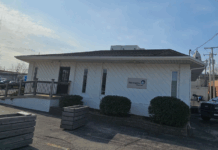SYRACUSE – Syracuse Redevelopment Commission members met Tuesday and authorized using some of the revenue from the Syracuse tax increment finance (TIF) district to pave roads within the district.
Town Manager David Wilkinson said the Syracuse TIF district has been on the books for about 10 years and has over a $1 million balance. The Syracuse TIF covers Ind. 13 North and South and one block in each direction. The funds can be used for utility improvements, roads and sidewalks.
Wilkinson said if they just use the revenue generated each year to do projects, and they could leave the $1 million untouched. The balance in the fund now is $1,014,450.46 and it’s been generating about a quarter million dollars each year.
Wilkinson and Public Works Superintendent Mark Aurich were asking for a total of $205,705 for paving of roads in the TIF district, which would free up funds in the general budget to do additional paving.
Redevelopment Commission President Larry Siegel said, “I think it’s a great use of TIF dollars” and another commission member agreed. All approved the expenditure.
Aurich said, “Those are the worst streets in town.”
The Redevelopment Commission approved two declaratory resolutions for residential TIFs. The first was for the Oakwood Development. The area is generally located at 849 E. Lake Road and is approximately 23.34 acres.
The second declaratory resolution was for a development known as the Allen Development on the north side of town off of Indiana Avenue and south of County Line Road and consists of 9.10 acres.
No one from the public was present but Jim Higgins, from LWGA, who attended virtually along with Dennis Otten of Bose-Mckinney, wanted it on record that residents and businesses in the areas were invited to attend.
At a public hearing held in April, Otten explained to those present that typically TIFs are commercial “but recently the legislature modified to allow TIFs for residential areas, driven by a need to get more housing stock.”
Otten said businesses are having difficulty getting workers because of a lack of housing. A residential TIF is like most other TIFs with two differences — the town had to get a determination that there hasn’t been much housing growth and Otten said it received that determination. The other difference is they need to get approval from the local school corporation, which it also received.
Residential TIFs include all the housing in the area but it is not a tax increase. Improvements are made in the residential TIF area and Redevelopment Commission helps with the cost of infrastructure like sewer and water if necessary.
Wilkinson also brought up the possibility of starting a facade program. He said there are a couple of different ways they could do it — either as a loan or a matching grant. Commission members asked him to email them more information so they can consider it.




